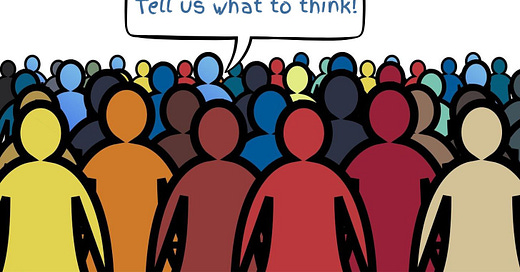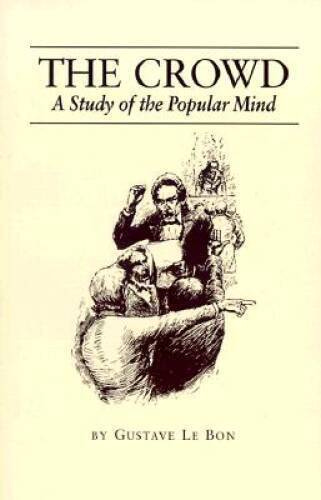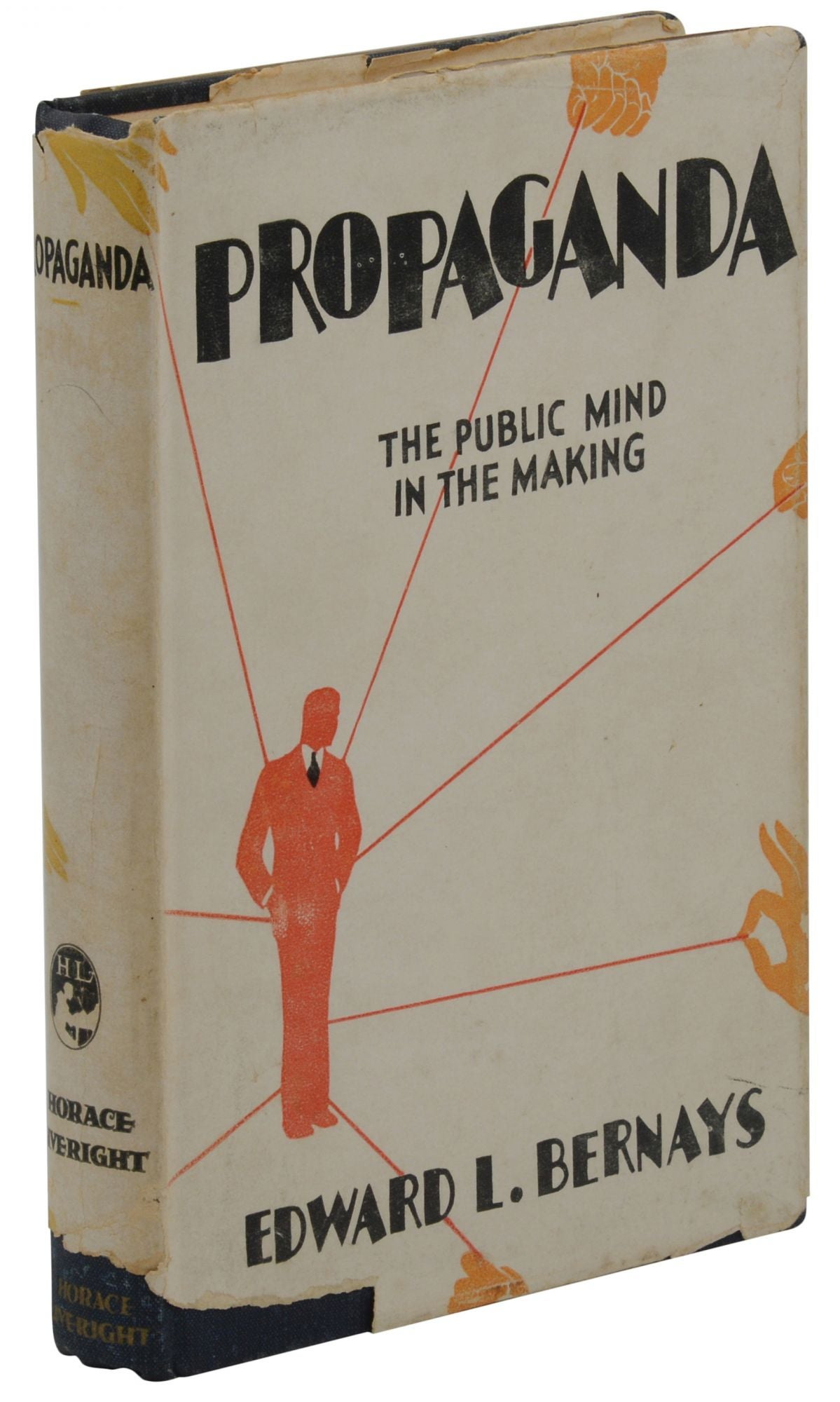I hated reading books when I was in school. Somewhere around age 14 or 15, I realized I didn’t hate reading, I just didn’t like any of the books that we were supposed to read for homework assignments. When I eventually found writing that interested me, I couldn’t get enough. And now, thanks to the amazing internet, I can sample virtually anything ever published and digitally toss aside whatever bores me. Advertising campaigns are probably my favorite type of nonfiction (if that’s what it is).
Early advertisers learned from trial and error that the public was largely ignorant and irrational when it came to making all sorts of important decisions, and that it was impossible for individuals to acquire the expertise needed to make informed decisions about complex issues. None of us like to hear that, but we also don’t like knowing that it’s easier to train a smart dog than a dumb one. Even the most brilliant mathematician alive is ignorant and irrational about a great many things. Some of us have met incredible thinkers who have no clue how an API or VPN works, and if pressed, would guess they’re both UHF channels.
Propaganda is a communication strategy used to influence public opinion and behavior, with the goal of promoting a particular agenda or ideology. I realize you might not like hearing this p-word in a neutral light. Propaganda is a powerful force in shaping public opinion, used by governments, corporations, and any other organizations trying to promote their interests. It’s why I tell people some of my work is propagandart to save the human race. Bicycle Buddha oracle cards, a book satirizing NIMBYs, memes, and mockumentaries are some examples of how I apply principles of propaganda to motivate more people to create happy, healthy communities.
My biggest inspirations are people who wrote or were written about many decades ago. I’m sharing this with you because even if you don’t like reading stuff that you’re “supposed” to appreciate, maybe you’ll like some old timey thought leaders and influencers. If you’re feeling a little adventurous, read a few old books.
Crowds are an irrational bunch.
Gustave Le Bon was a French thinker whose book The Crowd: A Study of the Popular Mind was published in 1895. It’s not easy to read, but it’s got timeless insights into the collective psyche—insights that early advertisers and propagandists like Edward Bernays, the father of public relations, leaned on heavily in the 20th century. (More on him in a minute.)
Le Bon argued that when individuals join a crowd, their rationality yields to emotion. He saw crowds as unified by a kind of mental contagion, where emotions and behaviors could be spread like wildfire, sparked by simple messages or powerful narrative triggers. This wasn’t just an academic theory—it became a playbook for those looking to sway the masses.
Early advertisers learned through trial and error what Le Bon theorized: the public, en masse, could be impulsive and impressionable. They realized it was futile to expect individuals to master the expertise needed to make informed decisions about complex issues—be it politics, products, or social causes. Le Bon saw that in groups, people mirror each other. They’re perfectly willing to be part of a collective response (group think) that’s more instinctive than intellectual. This isn’t a flattering portrait of humanity, but it’s hard to deny. We’re all ignorant and irrational about some things.
There’s an art to shaping minds.
Edward Bernays took Le Bon’s ideas to impressive heights, turning manipulation into a science. I highly recommend his 1928 book Propaganda. He defined propaganda as a deliberate communication strategy to influence public opinion and behavior, pushing a specific agenda or ideology. Governments wielded it to rally support for bloodshed, corporations used it to sell soap or cigarettes, and organizations adopted it to influence politicians.
“Bernays' honest and practical manual provides much insight into some of the most powerful and influential institutions of contemporary industrial state capitalist democracies.”
—Noam Chomsky
Bernays himself orchestrated campaigns that shaped culture—like convincing women in the 1920s that smoking was a symbol of liberation, dubbing cigarettes “torches of freedom.” He understood what Le Bon had observed: to move a crowd, you don’t appeal to logic—you tug at emotions. The contagion effect is at play when a meme or TikTok goes viral.
Propaganda is a tool. Use the tool.
The psychology of the crowd is different from the psychology of the individual. When you’re part of a crowd, you lose your individuality and become more suggestible and prone to irrational behavior. When a Virginia Tech fan is packed in with 65,000 other Hokies, that person will jump and roar as Enter Sandman rocks the football stadium. But if it’s just two Hokies watching the game on a TV in Best Buy, it’s a different response. Crowds are driven more by emotion and enthusiasm than by reason or logic.
Like any tool, propaganda can be used for good or evil. It can be used to make an outdoor dining pilot project permanent, or to double the width of Main Street like a wrecking ball through town. For each use case, there’s a communications component for the crowd and for the individual. Watch for and learn from the common forms of propaganda. It’s pointless to get angry at the fact that it exists. Get over it, and learn to identify what works and what doesn’t. Then do your best to use the messaging and persuasion tactics that seem to resonate with your audience.
Using symbols. Simplifying complex information makes it easier for people to understand. Visualize your local functional classification map or zoning map. Seemingly innocent lines and polygons go a long way to influence what’s considered reasonable or unreasonable.
Creating a narrative. Storytelling techniques like having a hero, conflict, and resolution stick in people’s minds. You’ll see this frequently with traffic engineering projects claiming to reduce congestion, or land use projects to increase housing affordability.
Using repetition and slogans. One of the best ways to reinforce a message. Transportation, economic development, and planning departments do this all the time. I’m sure you’ve seen slogans like "Building a Safer Route 1" or “Live, Work, Play” or “Share the Road.”
Appealing to emotions. Positive and negative emotions, like fear and hope. Public agencies use emotional appeals to persuade the public to support infrastructure projects. You’ve seen images of happy families in a new development to evoke hope and promote their project. Auto manufacturers do the same with families using the latest SUV.
Alright, enough from me. Go read some old books.





